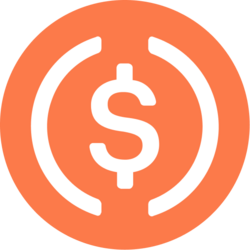D3sign | Moment | Getty Images
The U.S. economy is still in a “strong position” despite “heightened uncertainty,” according to the Federal Reserve’s latest assessment.
Yet there’s a looming economic risk the U.S. hasn’t meaningfully faced for decades — stagflation.
“The risks of higher unemployment and higher inflation appear to have risen,” Federal Reserve Chairman Jerome Powell said on May 7.
Those two factors — along with slower economic growth — are the definition of stagflation.

Stagflation is not here yet. The unemployment rate is low and inflation has come down, though it is still higher than the Fed’s 2% target, Powell noted last week. Signs that the economy is in a “solid position” prompted the central bank to leave the short-term federal funds interest rate unchanged.
What’s fueling stagflation fears
Swiftly shifting tariff policies are the main threat prompting experts to sound stagflation warnings. Uncertainty related to tariffs is also a strong factor contributing to stagflation risks, according to Greg McBride, chief financial analyst at Bankrate.
“Uncertainty, in and of itself, is a drag on economic growth,” McBride said.
Businesses may react by not hiring, not expanding production, not making investments and otherwise waiting for the forecast to change, he said.
“Even if a lot of [the tariffs] never actually come to fruition, this period of uncertainty itself is a headwind to the economy,” McBride said.
More from Personal Finance:
How consumers are preparing for an economic hit
Trump eyes tax hike on wealthy
How to land a job in ‘low firing, low hiring’ market
Stagflation was last a major issue for the U.S. economy in the 1970s as the country contended with the economic fallout of the Vietnam War, the loss of manufacturing jobs and spikes in oil prices.
While different factors are present today, stagflation is a “more pronounced risk than at any time over the past 40 years,” Greg Daco, chief economist at EY Parthenon and vice president at the National Association for Business Economics, recently told CNBC.com.
Meanwhile, consumer confidence sank to its lowest reading in five years as tariffs impacted individuals’ outlook and employment confidence, according to the Conference Board’s April survey. Nevertheless, total retail sales were up in April, both month over month and year over year, as consumers moved up purchases in anticipation of tariffs prompting higher prices, according to the CNBC/NRF Retail Monitor.
How consumers can prepare for stagflation
Stagflation’s effects would be felt across the U.S. economy. However, there are several ways individuals can minimize their personal exposure ahead of those risks, experts say.
1. Pay down high interest debts
Eliminating credit card or other high-interest debts like home equity loans can help create more room in your budget, particularly as interest rates stay put for now.
“If stagflation comes to pass, you’re going to need that breathing room, because inflation will be high, and prices for all your expenses will be moving higher,” McBride said.
2. Boost emergency savings
Most respondents — 65% — to the May CNBC Fed Survey said they expect the Fed will lower interest rates if stagflation risks come to pass.
With interest rates holding steady, cash savers still have a unique opportunity to access higher returns.
Top-yielding online savings accounts are still offering interest rates that are above the rate of inflation, according to McBride. That may not always be the case if interest rates come down and the rate of inflation picks up.
Having cash set aside can help prevent the accumulation of high-cost debt or the need to prematurely raid retirement accounts in the face of income disruptions, rising expenses or other unexpected costs, McBride said.
3. Think twice before stocking up on goods
Pending tariffs could mean rising prices on a variety of goods from leather goods to apparel to cars. That may tempt consumers to want to rush to buy the products they anticipate they will need, in order to save money.
But buyer beware: So-called “panic buying” can mean you shell out more money than you otherwise would by purchasing more than you need.












































